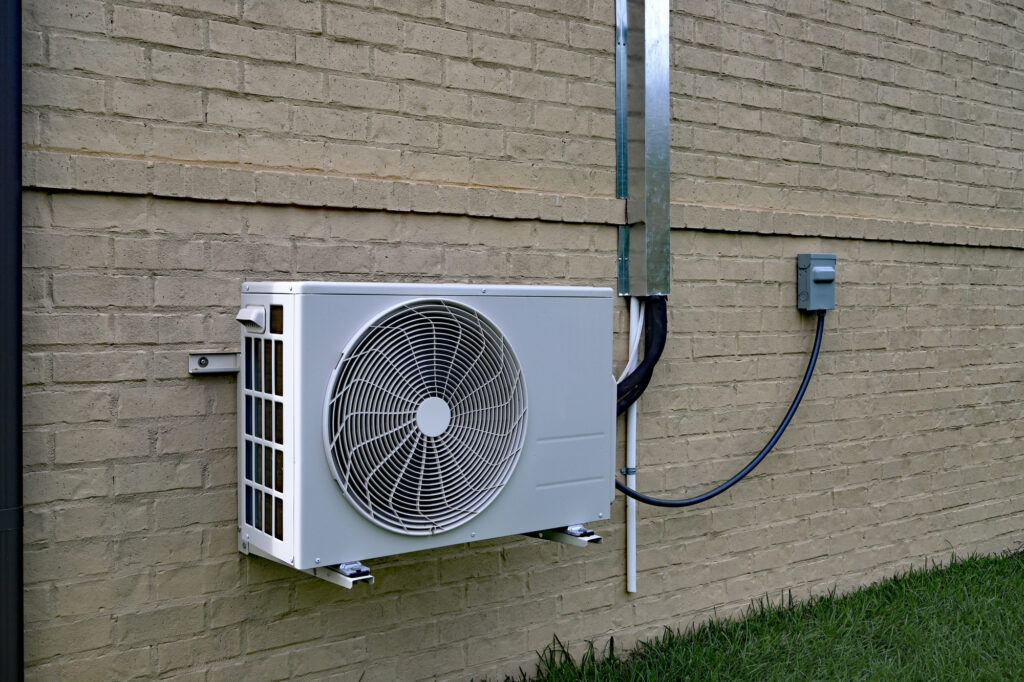Most people pay very little attention to their air conditioning unit. They want their house cool and comfortable. You pay it little notice as long as the air conditioner does its job.
But when something goes wrong, or you don’t have enough cool air coming out of your vents, you start to wonder how does air conditioning work?
When you understand how the system’s parts work together to create cool air, you also better understand the importance of good care for your air conditioning unit.
Read on to learn more about how your air conditioner works.
How Does Air Conditioning Work?
Most air conditioning units work in tandem with an inside and outside component.
The inside and outside work to convert hot air into cool air; you might wonder more specifically how your air conditioner makes that happen.
Interestingly, air conditioners cool air much the same way a refrigerator works to cool the inside of itself.
Let’s take a closer look at the different parts of the air conditioner and their role in the cooling process.
Evaporator
Let’s get started with the role of the evaporator. Its job is to take the hot air in through the evaporator coils.
While it does this, it removes the heat, in the end making it cooler.
The air conditioning unit sends liquid refrigerant through a tiny opening into the evaporator. The refrigerant goes through the coils. While it does this, it also picks up the heat from the air traveling through the coils simultaneously.
When it gets the heat, it evaporates and works to cool the air.
Blower
Next, the blower is an important part of the air conditioner, so you get the cooled air.
The blower circulates over the top of the evaporator unit, taking the cool air and blowing it out to you.
So, now the cool air and warm air are separated, and you’re getting the cooled air into your home, likely through the ductwork if you have a central air conditioning system.
Compressor
The compressor is located in the outdoor portion of your air conditioning unit. Once the heat is collected in the evaporator, it goes to the compressor in the form of a gas.
The compressor takes this gas and works to compress it, taking it back to a liquid form. Once it’s in liquid form, the cooling process can continue in the form of the liquid refrigerant.
Condenser
The condenser is also located in the outdoor part of your air conditioning unit. The condenser’s job is to collect all that hot air in the coils, then release it into the outside air.
You might expect cool air. It’s why when you go near your outdoor air conditioning unit, it will feel warm. Remember, you want the cool air to be inside, not out.
Your goal is to get rid of that hot air, which is what the condenser works to do.
Fan
If you have a split-system air conditioning unit, your outside unit is likely a large box. It has slits at the top of the box.
When you look in, you’ll see the fan. The fan is positioned over the top of the condenser. As it collects and releases the hot air it collected, the fan blows it up out of the unit.
Filter
The filter is on the inside of your HVAC system. When the system is blowing air, it’s the job of the filter to catch contaminants so they don’t blow into the ducts and your home.
The air filter can be responsible for catching things like:
- Dust
- Dirt
- Pet hair
- Lint
- Mold
- Bacteria
You can’t underestimate the importance of regular, routine changing of your air filter.
They can fill up with the contaminants they catch, making them less effective. This also makes your HVAC system less energy efficient. It means it has to work harder to get air through the filter.
Most experts suggest changing your filter around every three months. If you have people in your family with allergies or breathing issues, you may opt to change it more frequently.
Thermostat
Somewhere in your home, you’ll have a thermostat. This is the part of your unit that reads the air temperature in your home. You tell the thermostat what temperature you want your home to be.
Then the temperature goes higher than what you’ve set, and the air conditioning will kick on and begin cooling.
The thermostat is a simple device based on the idea that heat makes things expand, and cool air makes things contract. When your thermostat feels the warm air, it expands, which will make a switch go on and tell your unit to start cooling.
Air Conditioning Preventative Maintenance
Routine air conditioning service is one important thing you should be doing to keep your air conditioner running in peak condition.
Most experts suggest having the air conditioner checked out in early spring and your furnace in early fall before the more extreme weather hits when they’ll be working their hardest.
An HVAC specialist can look over all the parts of your air conditioning unit. They can clean the unit and ensure everything is in good working order.
Often doing this helps to prevent more serious repairs from popping up.
Use This Air Conditioning Guide to Keep Your Unit Running
Understanding how does air conditioning work helps you to see the importance of taking good care of your air conditioning system.
If you want to schedule a routine check-up on your air conditioner or need an emergency repair, we can help. Contact us today and let us help keep your home cool and comfortable.
